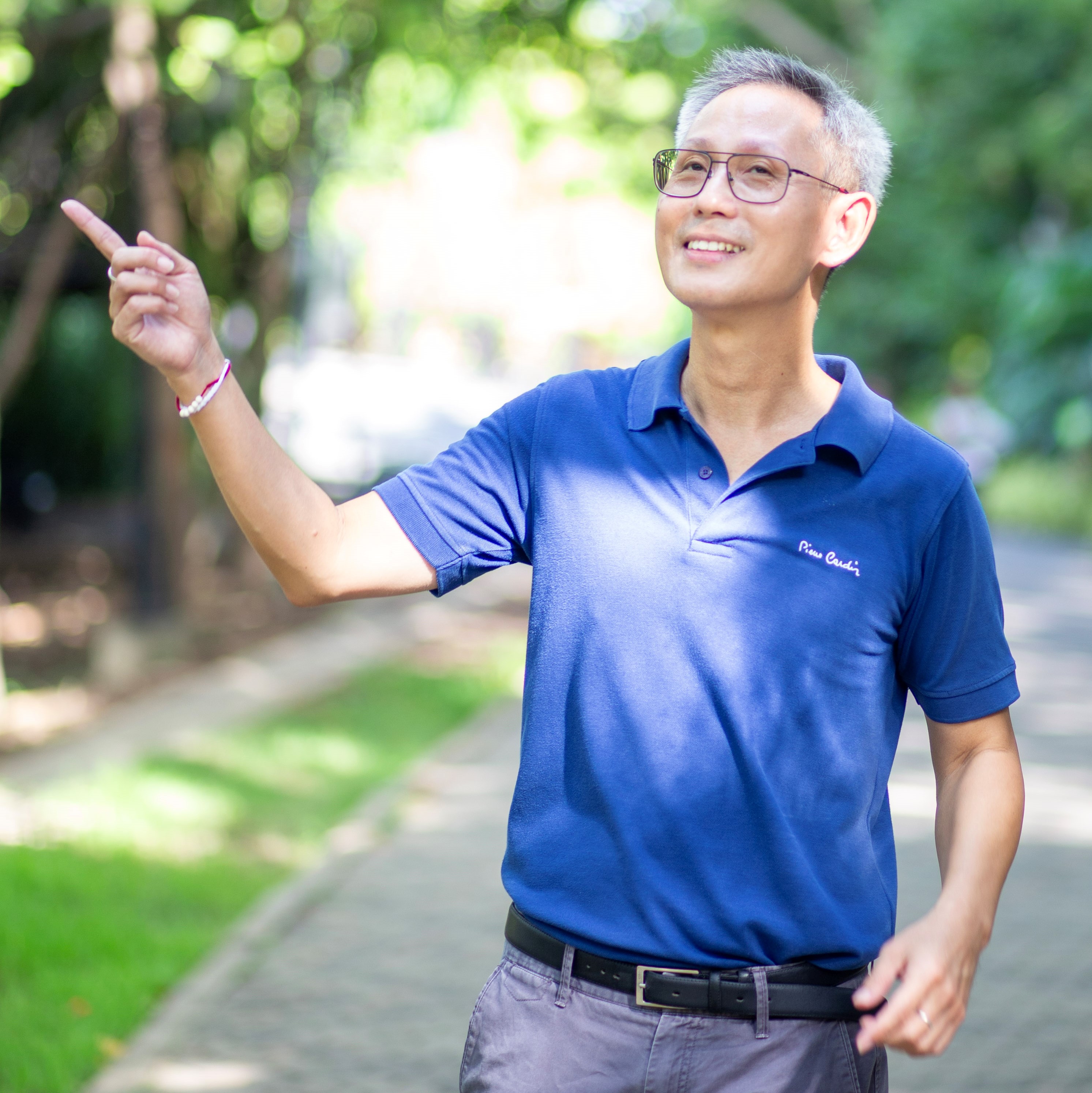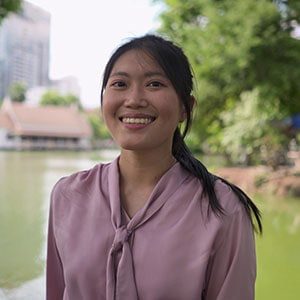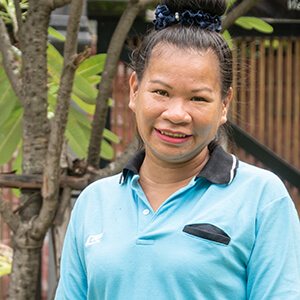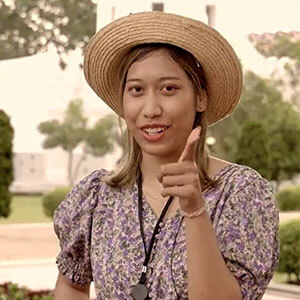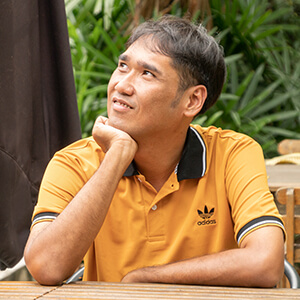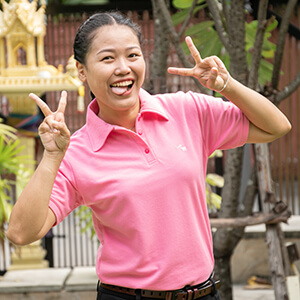Join Dew, one of Your Thai Guide’s fabulous guides as she shows you some of her favourite spots in Bangkok for this YouTube video.
If you’re heading out on a Bangkok private tour, one of the first things to learn is how to cross the street safely. Dew, a licensed local guide from Your Thai Guide, starts her tour with a quick but essential reminder: always look both ways—even at crosswalks. Bangkok traffic doesn’t always follow the lights. Her advice? “Just follow me and copy what I do. You’ll be fine!”
As you explore the city together, Dew shares practical tips that make your experience smoother, starting with temple etiquette. While visiting Wat Suthat, one of Bangkok’s oldest temples, she explains how to take respectful photos with monks. “Yes, you can take pictures,” she says, “but ask first. No touching—especially no hands on shoulders or heads. Ladies should keep a bit more distance, since monks aren’t allowed to touch women. The best way? Smile, stand nearby, or put your hands together in a respectful wai.”
Out on the streets, Dew points out a row of medicine stalls. “In Thailand, we have both Eastern and Western medicine,” she says, gesturing to shops on either side. “If one doesn’t work, you try the other. It’s about generations and what you believe.”
Next stop? Dessert. Dew introduces Namkhaeng Sai, a traditional Thai treat made from shaved ice topped with goodies like corn, jelly, water chestnut, and coconut milk. It’s a refreshing snack—and a hit with her guests on hot days.
As part of her Bangkok private tour, Dew also explains things that catch your eye but might confuse first-timers—like the rainbow of taxis. “The colors just show which company runs them,” she explains. “But always ask the driver to use the meter. If they say no, skip it. It’s how bad drivers overcharge.”
Walking through one of her favorite neighborhoods, Dew smiles and says, “Thailand is the longest buffet line in the world.” She shares how Thai food absorbs global influences. “When we got bread from the West, we didn’t know what to do with it. So we stuffed it with ice cream and sticky rice. Problem solved!”
Dew prefers to explore on foot, taking guests into hidden lanes, small shops, and food stalls. “Thai people are relaxed and friendly,” she says. “We smile a lot. If you smile at someone here, they’ll always smile back.”
When passing a well-known Pad Thai vendor, she leans in with a grin. “This one’s famous—but I know a better one, just around the corner.”
Later, the tour winds through a noisy alley where artisans hammer away at singing bowls. “Monks use these for meditation,” Dew explains. “Only a few families still make them by hand. Factory ones? Not the same quality.”
Moments later, the smell of wood fills the air. Dew leads you into a street where woodworkers have carved ornaments for over 100 years. A woman pushing a cart strolls by, selling food and trinkets. “In Thailand, food comes to you,” Dew laughs. “No need to go anywhere.”
Back on the road, Dew points out a tuk tuk—a popular, fun way to get around. But she adds a warning: “Always agree on the price before you hop in. If it seems too cheap, they might take you shopping instead of your real destination.”
On a canal bank, Dew shows you another mode of transport: a narrow wooden boat. “It connects the east and west sides of Bangkok,” she says. “Getting on takes a little skill!” She then cautions about motorbike taxis. “Fast, yes—but maybe not the safest. Try if you’re brave!”
From quiet temples to chaotic backstreets, Dew’s Bangkok private tour is packed with tips, insights, and local flavor. If you want to experience Bangkok confidently, with a trusted local by your side, book your Bangkok private tour with Dew from Your Thai Guide.

